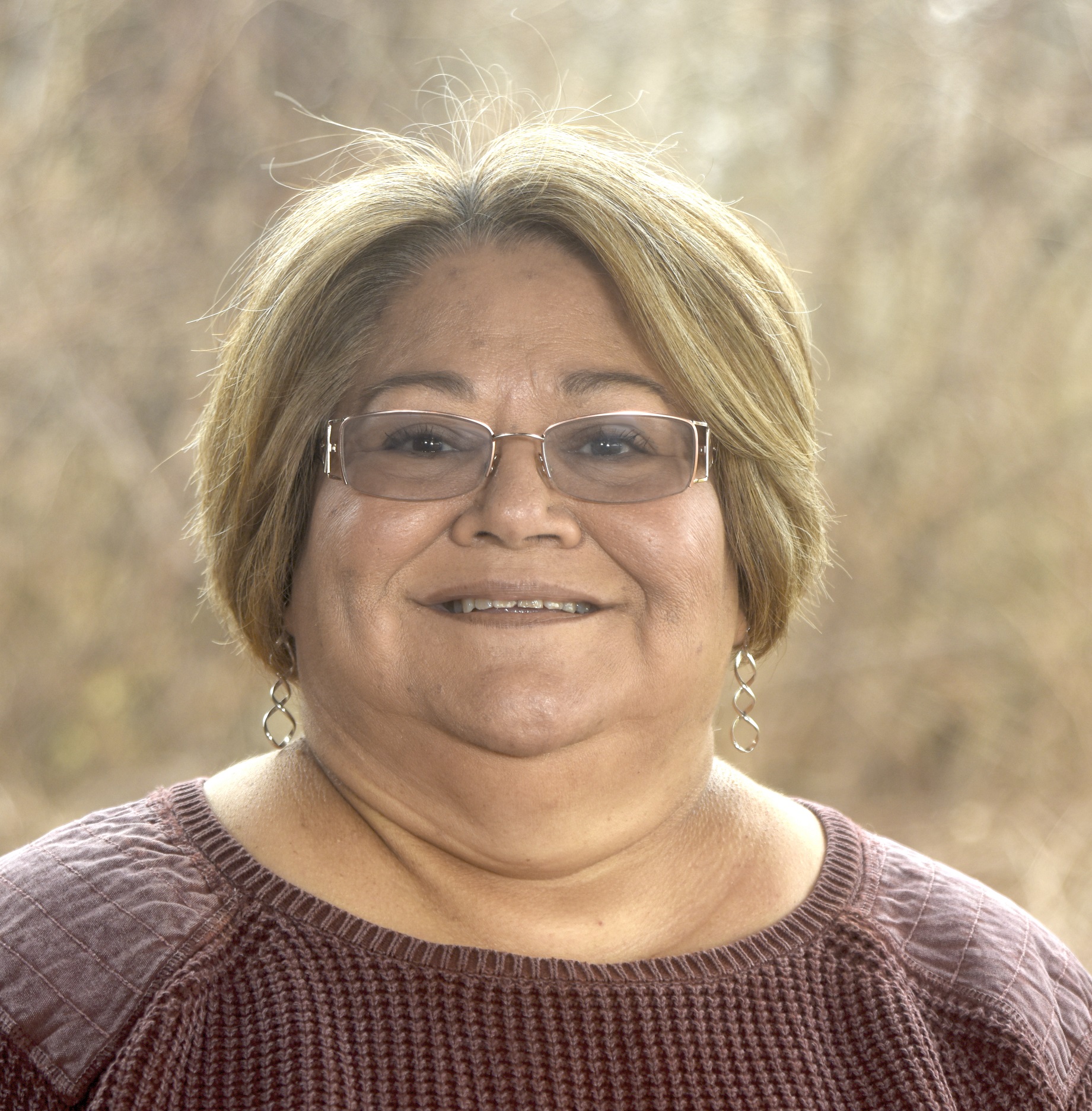Iris de León-Hartshorn is associate executive director of operations for Mennonite Church USA. This blog post is adapted from a sermon she gave at the annual meeting of Pacific Northwest Mennonite Conference, June 21-22.
John 20: 19-23
I fear sometimes that we have over-simplified the reading of the Bible to what we can immediately understand by pulling out specific texts. I prefer to look at the text within the larger framework of our understanding for how God is revealed through the Bible, history and the created order.
Each of the gospels in its own way grapples with the mission and identity of Jesus. For John, the question is: who is Jesus?And unlike the other gospels that start with a genealogy, Jesus’ Birth, or the beginning of his ministry, John starts with Jesus as the logos, the Word before creation. The translation of the Greek logos to the English “word” is insufficient. I ran across the following definition by Reformed theologian R. C. Sproul who said, “The Logos-Jesus John announces is the divine Actor, acting in creation and redemption in a coherent way.” John’s prologue is startling, Sproul says, because it tells how “The cosmic Christ enters our humanity. It is the supreme moment of visitation of the eternal with the temporal, the infinite with the finite, the unconditioned with the conditioned.” According to Sproul, the cosmic Christ is Christ from the beginning of time and before creation. As Mennonites, we don’t do a lot of thinking of the cosmic Christ, our emphasis has been on Jesus, the Son of God. A few weeks ago, I was in New Mexico and heard Richard Rohr, a Franciscan Priest who is both a contemplative and mystic, speak on the cosmic Christ. He said, “You know Christ is not Jesus last name.”
Christ is Jesus’ honorific title that acknowledges that Jesus was born with all-encompassing consciousness, the omniscient and omnipresent of God in every element of creation. How we read and understand scripture is important. If we understand that Christ was present at creation and is logos, the breadth of who Jesus was and is becomes far more broad and complex.
A word being used more lately in theological discussions is Imago Dei, the image of God. All of creation reflects the image of God. The cosmic Christ encompasses all of creation. If we understand the goal of John’s gospel to be to reveal the cosmic Christ, it changes the way we understand the text. Let’s explore what this might mean as we read John 20:19-23. In this text, the disciples are behind a locked door, afraid of the authorities, and what the authorities might do to them. Earlier, Mary told the disciples of Jesus ascent to the Father, yet they choose to focus on their fear, hiding behind a locked door, rather than on Mary’s proclamation. This is the same old story of a woman not being believed. Her word is not taken seriously. Additionally, I am struck by how often we choose to focus on the wrong thing — even myself. You might think that the fact Christ ascended would empower the disciples, but instead there they are behind a locked door in fear.
There are many times we find ourselves fearful and not in control of a situation, but it can also be a sign that we are not in charge. We are the creatures and not the Creator. I think this is a very hard concept for us to comprehend in a culture that values self-sufficiency and a “can-do spirit.” Humanism has shaped Western Christianity in a way that elevates the human being over the divine, believing in only what we can see, touch and feel. Now, of course, that is the extreme, but that extreme does exist. So when we are faced with a situation we can’t control, maybe we can begin to see a more accurate relationship between ourselves and God.
As the disciples stand behind a locked door, Jesus appears among them and says, “Peace be with you,” but they don’t seem to recognize them. I have always been puzzled by that particular verse. Here Jesus stands before them, someone they walked with and ministered with for three years. Then they witnessed his death on the cross, and now he stands among them and they don’t recognize him? Once Jesus shows them his wounds, they recognize the Jesus they knew. I wonder if it was like one of those pictures where you look at it and see one thing, but a slight turn or shift in how you view it, and another image comes to light. Did they first encounter the cosmic Christ in all God’s glory, and then when confronted with the wounds on his body see the Jesus they knew and loved? It’s a mystery.
As we continue, Jesus again says to the disciples, “Peace be with you, as the Father has sent me, so send I you.” And then he breathes on them and says, “Receive the Holy Spirit.” In Genesis 2:7-9, the cosmic Christ, who is one with God, breathes life into humanity. The Genesis story is incredibly significant and provides insight for this passage in John. In John 1, all things come into being through Jesus, logos. In the beginning of creation, the cosmic Christ breathes life into humanity, and later, that same Christ breathes the Holy Spirit into the disciples. At the time of creation, all was reconciled to God, there was Shalom, peace, among all creation.
This is the peace that Jesus is bestowing on the disciples in the John. This is a peace that defies our Western thinking. It’s a peace that does not classify people or creation into categories. It’s a peace that puts us in right relationship with each other. This includes creation. It’s a peace that reconciles us to God, our creator. This is a peace that is unattainable by human endeavor. It is obtained through the power of the Holy Spirit.
 It has become so easy for us to think of ourselves as all-powerful. When we see people get away with unspeakable behavior because they have the financial means, we start to believe that money is the power we need. Or maybe it’s the power of fame, success or intelligence. The list continues. But God offers us the transforming power of the Holy Spirit that can bring real peace to a world that hungers for false power, a world that has convinced itself that peace happens through fear and might, a world that believes that God’s creation should be subjected to abuse, rather than seeing God in creation. Here’s the reality: God does not need us to reveal Godself to the world. In Romans 1:20 we again are reminded of the cosmic Christ. The passage says; “Ever since the creation of the world his eternal power and divine nature, invisible though they are, have been understood and seen through the things he has made.” The cosmic Christ is revealed through creation. Christ has invited us to join in the reconciling work that is going to be done, that is being done and that has been done.
It has become so easy for us to think of ourselves as all-powerful. When we see people get away with unspeakable behavior because they have the financial means, we start to believe that money is the power we need. Or maybe it’s the power of fame, success or intelligence. The list continues. But God offers us the transforming power of the Holy Spirit that can bring real peace to a world that hungers for false power, a world that has convinced itself that peace happens through fear and might, a world that believes that God’s creation should be subjected to abuse, rather than seeing God in creation. Here’s the reality: God does not need us to reveal Godself to the world. In Romans 1:20 we again are reminded of the cosmic Christ. The passage says; “Ever since the creation of the world his eternal power and divine nature, invisible though they are, have been understood and seen through the things he has made.” The cosmic Christ is revealed through creation. Christ has invited us to join in the reconciling work that is going to be done, that is being done and that has been done.
In the Journey Forward Renewed Commitments, Mennonite Church USA has tried to convey intertwined truths about God that we understand not only intellectually, but also through experience. Renewed Commitments is a living document that is congruent with the living word, the logos, the Christ. We also know full well we can never fully understand God, and having mystery in our spiritual lives is important. It reminds us who is Creator.
I am fortunate in my job. I get to see the various ways that Mennonite Churches have joined God in proclaiming God’s peace, through acts of justice, reconciliation, walking alongside those who are hurt, pushing for creation care and loving people unconditionally.
In New York, Mennonites founded Radical Living Urban Farm. This organization works with churches to teach children how to plant, care for and harvest a garden, how to cook, and how to share their bounty. They also discuss issues like racism in their communities and teach activism, so that God’s reconciling peace can be experienced by all people they touch. In some ways this seems so basic, yet their impact is profound.
In Kansas City, a church planting couple works tirelessly toward reconciliation, often in a violent context. They have been in the U.S. for 25 years, but they can’t forget the genocide they witnessed in their own home country, Ethiopia. So their work in the U.S. has been one of peace, because the alternative they have witnessed is death.
In Tucson, Arizona, a Mennonite pastor views part of her ministry as visiting immigrants held at the Florence Detention Center. Inside the center she has found women and children in search of safety who have instead encountered overcrowded facilities. They are alone and, many times, feeling hopeless. This pastor brings them a glimpse of God’s love as she reaches out in friendship — making that human connection.
There are so many more stories of people in our churches across the U.S. that have embraced God’s call to receive the Holy Spirit, be filled with God’s peace and to go out to join God’s work of Shalom. Remember these are things we can’t do on our own.
We must keep in mind that from the beginning of time, it was the cosmic Christ that gave us life with our first breath as humanity, and then breathed again to empower us with the Holy Spirit. The work that we do is possible only through the power of the Holy Spirit.
Let us be open to the cosmic Christ that binds all things together, reconciling all of creation. May we walk with each other as brothers and sisters demonstrating God’s peace with each other, with God and with all creation.


